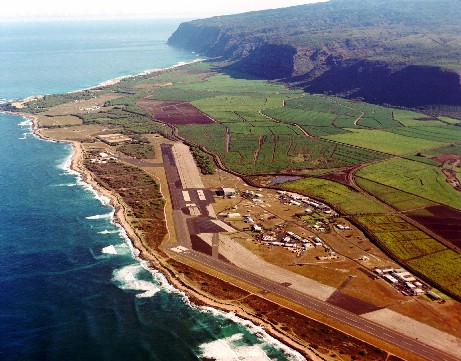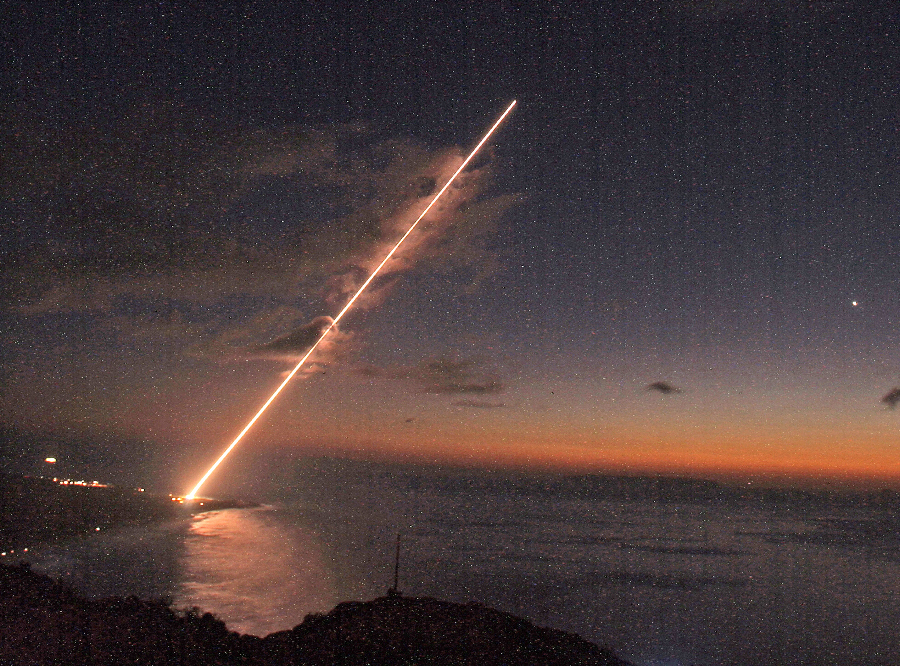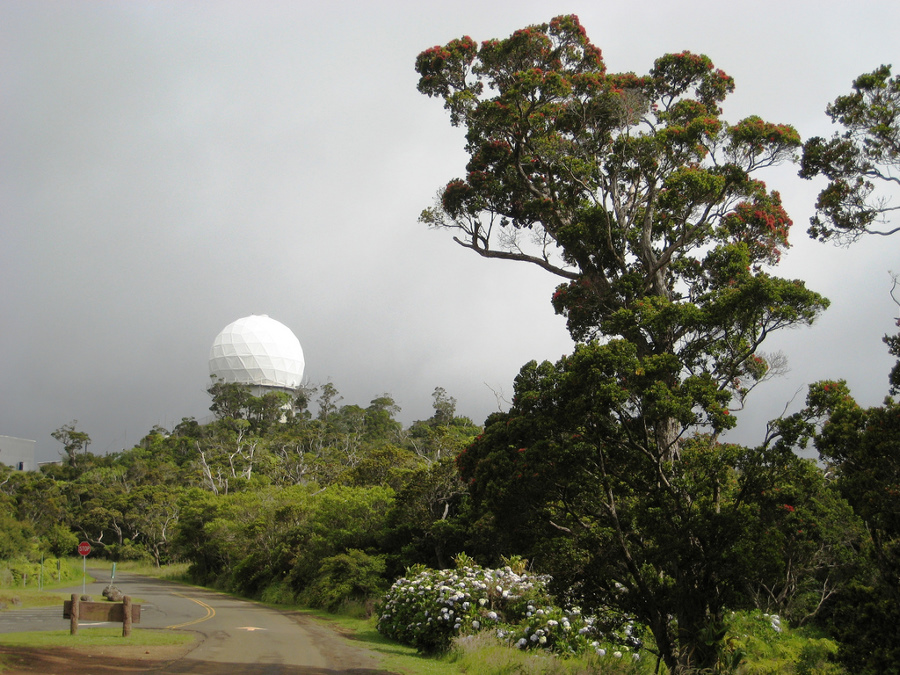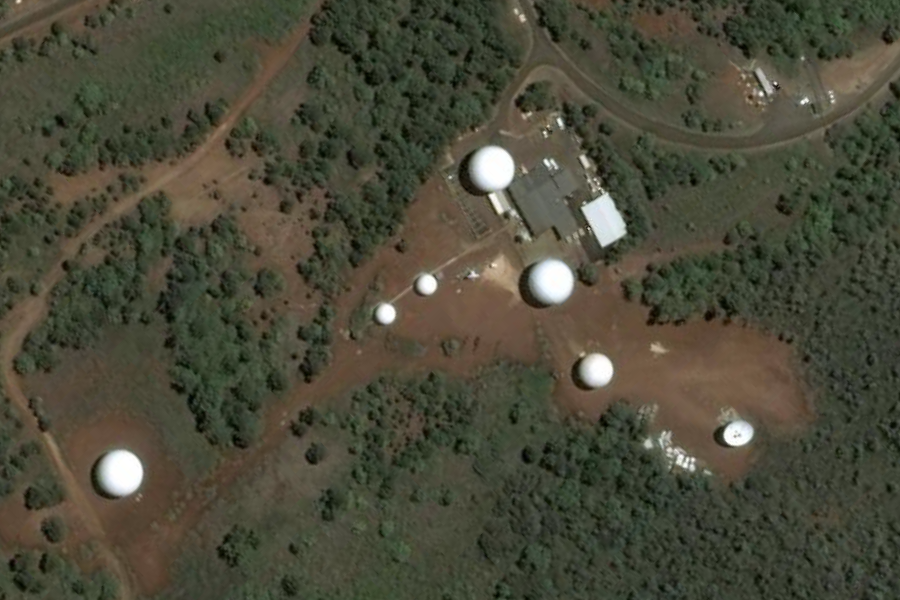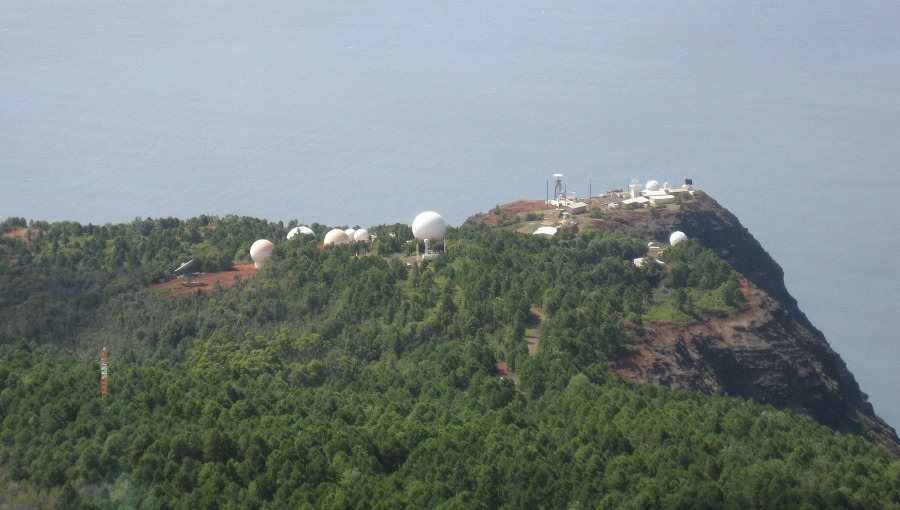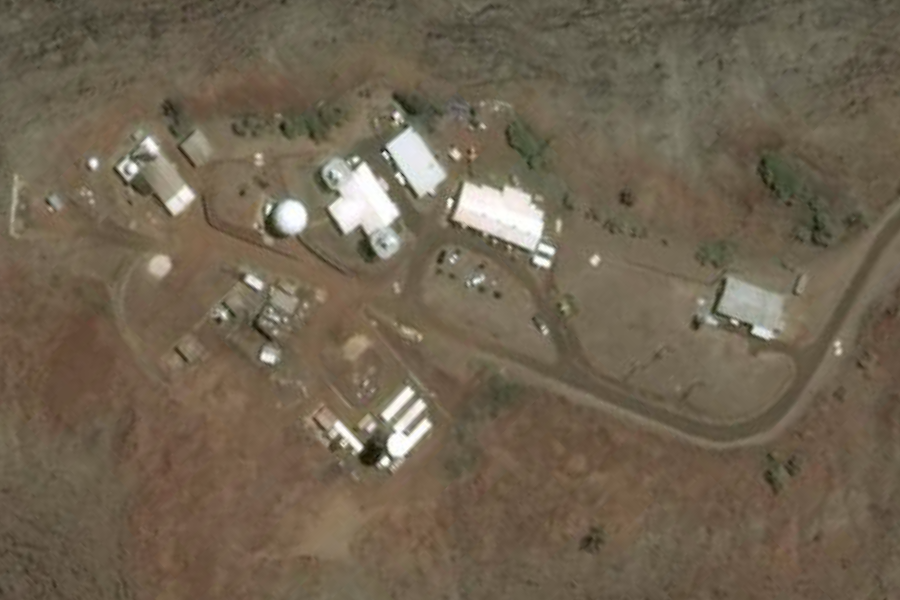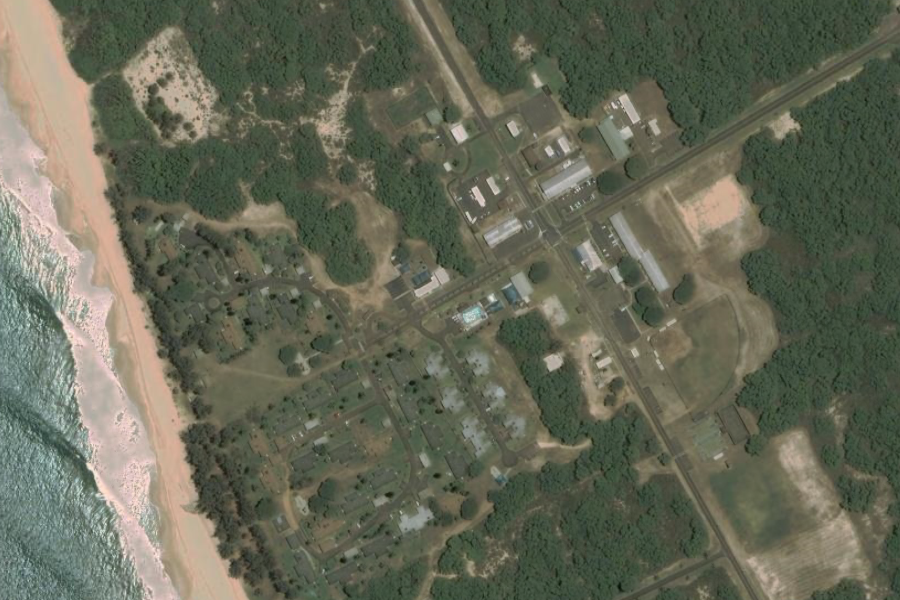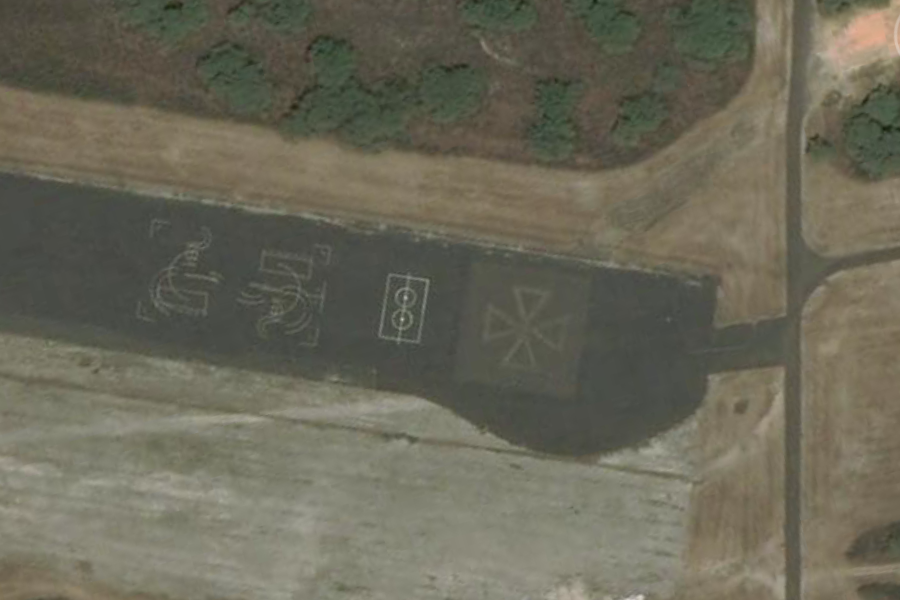|
|
||||||||||||
|
US NAVY +57° 26' 9.00", -152° 20' 16.00" ...
P.O. Box 128, Kekaha, Hawaii 96752-0128 |
||||||||||||
|
...
Image by Refined.Digital PMRF is the world's largest instrumented multi-environment range capable of supporting surface, subsurface, air, and space operations simultaneously. There are over 1100 square miles of instrumented underwater range and over 42,000 square miles of controlled airspace. This makes PMRF a premier facility for supporting operations which vary from small, single-unit exercises up to largescale, multiple-unit battle group scenarios. |
||||||||||||
|
Sandia National Laboratories operates the Kauai Test
Facility (KTF) for the Department of Energy and, through inter-Service
Support Agreements (ISSA), provides PMRF with rocket launch services for
target systems and upper atmosphere measurements.
The Sandia Maui Haleakala Facility can provide telemetry
receiving/recording, flight following, command control and flight termination
systems for high-altitude/exoatmospheric launches from PMRF, and for high-altitude
operations which traverse the Hawaiian Island chain.
The Air Force Maui Optical Station (AMOS), the Maui Optical Tracking and Identification Facility (MOTIF), and the Ground-based Electro-optical Deep Space Surveillance System (GEODSS) are located at the Maui Space Surveillance Site (MSSS) atop Mount Haleakala. |
||||||||||||
|
Barking Sands, Kauai, Hawaii ..
The Pacific Missile Range Facility (PMRF) on the Hawaiian island of Kauai is one of the Pacific ranges supporting experimental and developmental testing of the Ballistic Missile Defense System. It is the world’s largest instrumented multi-environment range capable of supporting surface, subsurface, air, and space operations simultaneously. Lincoln Laboratory personnel located at PMRF provide technical advice, consultation, and analysis support as requested by the government leadership at PMRF. The Laboratory has provided significant inputs into sensor designs and implementations for the Range. SOURCE: MIT Lincoln Laboratory |
||||||||||||
|
Conducts Successful Exo-Atmospheric Interceptor Test .. A THAAD interceptor is launched from the Pacific Missile Range Facility, Hawaii, during a test April 6. Written on October 27, 2007 – 6:31 pm | by FIDSNS | Lieutenant General Henry “Trey” Obering, Missile Defense Agency director, announced today that an important test of the Terminal High Altitude Area Defense (THAAD) element of the Ballistic Missile Defense System was successfully completed at approximately 3:15 a.m. Eastern Daylight Time today (approximately 9:15 p.m. Friday Hawaii Standard Time), resulting in the intercept of a ballistic missile target at the Pacific Missile Range Facility off the island of Kauai in Hawaii. Preliminary indications are that planned flight test objectives were achieved. The intercept involved the “exo-atmospheric” (outside earth’s atmosphere) “hit to kill” destruction of a unitary (non-separating) target representing a “SCUD”-type ballistic missile launched from a mobile platform positioned off Kauai in the Pacific Ocean. The interceptor was launched from the THAAD launch complex at the Pacific Missile Range Facility. Since November 2005 the THAAD Weapon System program has conducted seven successful flight tests including four tests involving the successful intercept of threat representative targets:
This was the fourth successful intercept for the current THAAD program in four tests and the third test of the THAAD system at Pacific Missile Range Facility. The first test at the Pacific Missile Range Facility was a successful high-endoatmospheric (just inside earth’s atmosphere) intercept of a SCUD-type unitary target in January of this year. The second test this past April, also a success, involved the intercept of a “mid endoatmospheric” (inside earth’s atmosphere) unitary target representing a “SCUD”-type ballistic missile. Soldiers of the 6th Air Defense Artillery Brigade stationed at Fort Bliss, Texas operated all THAAD equipment during all tests, conducting operations of the launcher, fire control and communications and radar. Their interaction with the complete THAAD system provided valuable test and operations experience for the soldiers, and contributed to the operational realism of the tests. THAAD is the first weapon system with both endo-atmospheric and exo-atmospheric capability developed specifically to defend against short, medium and intermediate range ballistic missiles. The THAAD system will provide high-altitude missile defense over a larger area than the complementary Patriot system, and, like the Patriot, intercepts a ballistic missile target in the “terminal” phase of flight—the final minute or so when the hostile missile falls toward the earth at the end of its flight. Patriot and THAAD, as well as the long-range Ground-based Midcourse Defense and the sea-based Aegis Ballistic Missile Defense, all use “hit to kill” technology. THAAD is designed to defend U.S. troops, allied forces, population centers and critical infrastructure against short- to intermediate range ballistic missiles. THAAD comprises a fire control and communications system, interceptors, launchers and a radar. The THAAD interceptor uses hit-to-kill technology to destroy targets, and THAAD is the only weapon system that engages threat ballistic missiles at both endo- and exo-atmospheric altitudes. A key element of the US’s Ballistic Missile Defense System (BMDS),THAAD is a Missile Defense Agency program, with the program office located in Huntsville, AL. The agency is developing a BMDS to defend the United States, its deployed forces, friends and allies against ballistic missiles of all ranges and in all phases of flight. |
||||||||||||
|
+22° 7' 49.48", -159° 43' 38.03" ...
Range Control and the Operation Control Centers are in the Barking Sands operations area, one-half mile from the main gate. Tracking and surveillance radars, data processing, and the communication network hut are included in the operations area. A target support and red-label area is a mile north of the main gate, with the PMRF ordnance and launching area farther to the north. Airfield facilities in the main area of Barking Sands are capable of supporting up to and including C5-type cargo aircraft, tactical aircraft, and helicopters. Range support aircraft include five UH-3H helicopters which are used for surveillance, personnel transfer, logistics, target launch, and weapon/target recovery; and three C-26 fixed-wing aircraft for range surveillance, electronic warfare, and logistics. |
||||||||||||
|
+22° 7' 49.48", -159° 43' 38.03" ...
....
...
|
||||||||||||
| Raytheon Awarded Contract With
Potential Value of $345 Million For Atmospheric Interceptor Technology
Test Bed Program
Source: Business Wire, Oct 27, 1998 LEXINGTON, Mass.--(BUSINESS WIRE)--Oct. 27, 1998--Raytheon Company (NYSE:RTNA), (NYSE:RTNB) has been awarded an Army contract valued at a potential $345 million for the Atmospheric Interceptor Technology (AIT) Test Bed program. The award includes a basic $45 million cost-plus fee contract to fund the program's principal objective of designing, developing and testing potential pre-planned product improvement efforts initially in support of five endoatmospheric Major Defense Acquisition Development Programs: Medium Extended Air Defense System (MEADS); Navy Area Defense System (NADS); Navy Theater Wide (NTW); Patriot Advanced Capabilities-3 (PAC-3); and, Theater High Altitude Air Defense (THAAD). Endoatmospheric weapons systems defend against theater ballistic missiles and advanced air breathing missile threats in the earth's atmosphere at an altitude of 100 kilometers or lower. The award also includes options for $299 million for next generation endoatmospheric and exoatmospheric system improvements as well as new technology efforts. "Our customer depends on advanced technologies to infuse its defenses against increasingly sophisticated ballistic missile threats," says Jerry K. Lockard, Raytheon Systems Company vice president of the Missile Systems business unit. "The AIT test bed, capitalizing on Raytheon's missile systems expertise, will provide the advanced technology research and scientific innovation necessary to expand current endoatmospheric defense capabilities and develop new ones." The work conducted under this U.S. Army Space and Missile Defense Command contract will be performed primarily in Tucson, Ariz. Raytheon business units across the country will provide ancillary support, leveraging various sensor technologies to develop the necessary improvements and solutions for the future atmospheric interceptor system. Raytheon Company, based in Lexington, Mass., is a global technology leader that provides products and services in the areas of commercial and defense electronics, engineering and construction, and business and special mission aircraft. Raytheon has operations throughout the United States and serves customers in more than 80 countries around the world. |
||||||||||||
|
|
||||||||||||
|
...
+22° 3' 34.02", -159° 46' 43.89"
+22° 2' 50.46", -159° 46' 44.08"
+22° 3' 34.02", -159° 46' 43.89"
+22° 1' 30.23", -159° 47' 5.48" Barking Sands Pacific Missile Range Facility Airfield Also known as Barking Sands Military Reservation, Kekaha Military Reservation, Barking Sands Airfield, Bonham Airfield, & Bonham Air Force Base. Although a civilian air-strip was built at this approx. location in 1932, that was probaly Mana, 3 miles SE. This field was built during WW-II & saw very heavy useage. Although military use declined after the war, civilian air traffic increased, although it was still owned by the military. The Air Force took it over in 1954. Two years later, missile operations started & the Navy gained the field in 1964. It still supports this mission, although only 1 runway is active. By mercforhire
+22° 3' 34.02", -159° 46' 43.89" ..
(click for larger view) Barking Sands is a beach on the island of Kaua'i in the Pacific Ocean. It is the location of Pacific Missile Range Facility, a rocket launch site for the United States Navy, and is also used for testing missile defense systems.
Tartar Dr +21° 59' 55.40", -159° 45' 55.32"
+21° 59' 50.39", -159° 45' 29.50"
Kokole Point Rd +21° 59' 1.14", -159° 45' 27.40"
+22° 2' 40.83", -159° 46' 46.94" |
||||||||||||
| FAIR USE NOTICE: This page contains copyrighted material the use of which has not been specifically authorized by the copyright owner. Pegasus Research Consortium distributes this material without profit to those who have expressed a prior interest in receiving the included information for research and educational purposes. We believe this constitutes a fair use of any such copyrighted material as provided for in 17 U.S.C § 107. If you wish to use copyrighted material from this site for purposes of your own that go beyond fair use, you must obtain permission from the copyright owner. | ||||||||||||
| ~ MENU ~ |
